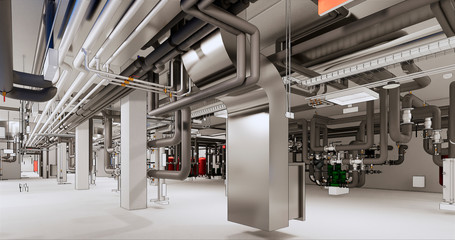Importance of Quality Structural Drawings for your Project
Calculations and drawings are two significant categories wherein the structural design is divided. Both are equally essential in making sure that the ability of a building, to carry the design loads, is adequate enough.
However, once the construction is commenced, these structural drawings contribute critically. As far as calculations are concerned, they assist engineers in determining which structural connections and members would be perfect in a specific project.
With the help of calculations, engineers can comprehend the layout, size, stiffness and strength of these elements as well. Structural drawings are the language that engineers use to convey the design requirements of a project to the contractor.
They display the type of connections and members, their interface and the locations. The structural drawings’ clarity, along with the detailing level that they comprise, can impact the ability of a contractor to read and comprehend what they need to construct.
Moreover, quality drawings also decrease authorizing revision cycles; thus, helping contractors come to a precise estimation and decrease the risk of Requests for Information (RFI) and change orders while constructing. Here are a few reasons that define why quality structural drawings are important for a project.

Unless the project is minor, you would have to get a variety of permits before beginning the work. The list may cover permits for demolition work, plumbing, electrical, mechanical and others related to the complete project.
While some permits can be acquired over-the-counter or online by showcasing a few documents, a majority of permit applications are subjected to a plan check review given by the Building Department.
During this process, the building experts evaluate the compliances of the project with local codes. Simultaneously, the structural design undergoes an assessment of drawings and calculations. In case the reviewers discover errors and are unable to comprehend the drawings, they stipulate revisions that the design team has to implement before resubmitting the documents.
This cycle continues until the officials are fine with compliance. Submitting clear, precise and compliant calculations and drawings with the permit application helps to decrease the revision cycles and kickstart the project faster.
Precise Quotation:
Before the construction begins, your prospective contractors will provide an estimate for the work. This estimate will be dependent upon the drawings that the design team has issued for bidding. While these drawings are not extremely important for construction, they play an essential role in communicating the design requirements of the project effectively.
Lack of detail and vagueness can lead to missing portions or overpriced bidding by the contractor. Such imprecisions can later become substantial issues when the construction costs don’t align with the budget. Thus, quality drawings with adequate details can help contractors quote with better preciseness.

Avoiding Additional Costs in Construction:
Once construction begins, structural drawings help to guide the contractor throughout the selection and installation of connections as well as members. As mentioned above, unclear and irregular drawings can lead the contractors to look for clarification through an RFI.
If not, the chances of misinterpreting the drawings are always on the higher side. RFIs are the formal communication channel between the design team and the contractor. Although it protects against errors but consumes a lot of resources and time.
Thus, it’s better to avoid RFIs by keeping the aim higher with clear structural drawings. If vague drawings end up misguiding the contractor during the process of construction, the impact on schedule and error could be severe.
Matzen Solutions is a steel detailing and steel shop drawing service provider in India. We intend to provide you the unique, competitive and valuable services as per your expectations. Customers will be able to get required quality reflecting their diverse industry needs. Matzen solutions is a leading engineering firm specializing in Structural Steel Shop Drawings, Rebar Shop Drawings, Precast Shop Drawings and MEP and HVAC Drawings Services.
Services
Get In Touch
17, Vasupujya Complex, Income Tax, Ahmedabad-380014
info@matzensolutions.com
+91 9898111667

